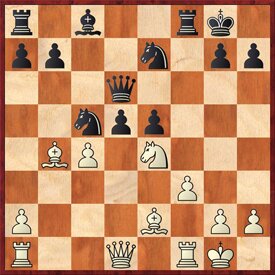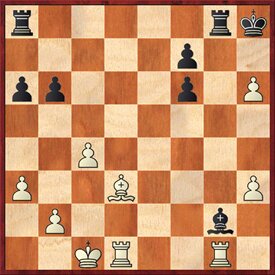
The fight for 9 Queens Best Game Prizes at the US Women’s Championship (Saint Louis, October 3-14) was fierce! A panel of four judges, including GM Ben Finegold, IM Greg Shahade, 9 Queens instructor Amanda Mateer and Author & WIM Dr.Alexey Root, ranked their top five games. The grand prize winner was Zatonskih-Melekhina ($300), and there was a tie for 2nd ($100 each) between Baginskaite- Abrahamyan, Abrahamyan-Melekhina and Abrahamyan-Krush. You can see all the judges’ comments and play through the contending games on the Chess Life Online story.
Choosing my own picks was very tough. This tournament saw a record-breaking twenty decisive games in a row and there were so many exciting battles. I went with my gut picks as a live commentator for the event. The links below take you to the play through games on the website of the Chess Club and Scholastic Center of Saint Louis, where you can also see final results, photos and some videos I hosted with Macauley Peterson of the ICC.
Zatonskih-Melekhina (round six)
Zatonskih’s fiercest battle of the event. Melekhina is a great fighter, so this was a battle between two equally determined players, but Zatonskih’s careful balancing of aggression and patience set her apart. In a post-tournament interview, Zatonskih mentioned the Karpovian restrictive move a4 as her favorite move of the event.

Foisor-Goletiani (round six)
Foisor ruthlessly exploited Goletiani’s mistakes in this game with 14.Ng5! (threatening 15.Bxf6 xf6 16.Qh7++)

After 14…g6, Foisor followed it up with 15.Bxb7 Nxb7 16.Ne4! after which she quickly gained a winning position. Very well-played.
Krush-Zatonskih (round three)
This was the most anticipated game of the tournament due to last year’s controversial Armageddon playoff and also because of Krush and Zatonskih’s close ratings. They are often only a point or two away from each other (though Zatonskih will probably lead by a nice margin after the US Women’s) 22…b5 was in my eyes the decisive move of the tournament, signifying that it might not be a battle between Zatonskih and Krush after all.

22…b5 is an anti-positional move, permanently ceding the c5 square. However, it also happens to be winning! Now Black is threatening the crushing Nb7!, when White’s queen only retreat square a3 is inadequate due to …b4. Instead Krush tried 23.Rb3 Nb7 24.Qa3 b4 25.Qa4 but fell quickly after 25…c5! (threatening …c4) 26.dxc5 Nxc5 27.Qb5 Rab8 28.Qe2 a4 and White resigned.
In this game Zatonskih chose her opening well, equalized and managed to get her tricks in early.
Krush-Baginskaite (round eight)
Krush has a take no-prisoners attitude and she is the most vocal and confident of the players in the tournament. People expect her to play well, so when she does, it doesn’t cause many shock waves. But I was surprised that this pretty game, marked by the nice 0-0, didn’t get any votes by the Best Game Judges.

Now if Baginskaite grabs the pawn 16…exf3 the simple 17.Bxf3 and the triple skewer on the a3-f8 diagonal is impossible to defend (for instance the simple 18. dxc6 is a crushing threat). If Black plays 16…cxd5 17.Nxe4! wins instantly–A pretty demonstration of a double pin.

Black played 16…Bf5 instead but got a terrible position, which Krush exploited smoothly.
Fan-Goletiani(round eight)
Part of the reason I chose this game is for its mass audience appeal. The lowest rated player in the tournament (who is also a rock star!) beats an experienced IM. This is a straightforward game you can show students as an example of both opposite side castling positions and to reinforce skewers and pins.

Here Fan played 23.Nxe4, exploiting a current pin and a potential pin. 23…Nxe4 loses to 24.Qxe7 while 23…Qxe4 loses to 24.Bd3. A few moves later, we find ourselves another instructive tactical moment.

Fan played 28.h7 Rg7 and 29.Rxg2! and now if 29…Rxg2 30.Be4 snags a full rook. Normally, Black would be able to restore material equality by connecting rooks with Rg8, but here that square is guarded by the h7 pawn.
Many other master-level games have more complex tactics that are hard to show to beginner or intermediate students. Fan-Goletiani is a great game for 9queens Academies across the country!
9 Queens was proud to sponsor this Best Game Prize Contest. Winning beautifully is different than just winning.










.jpg)
.jpg)






